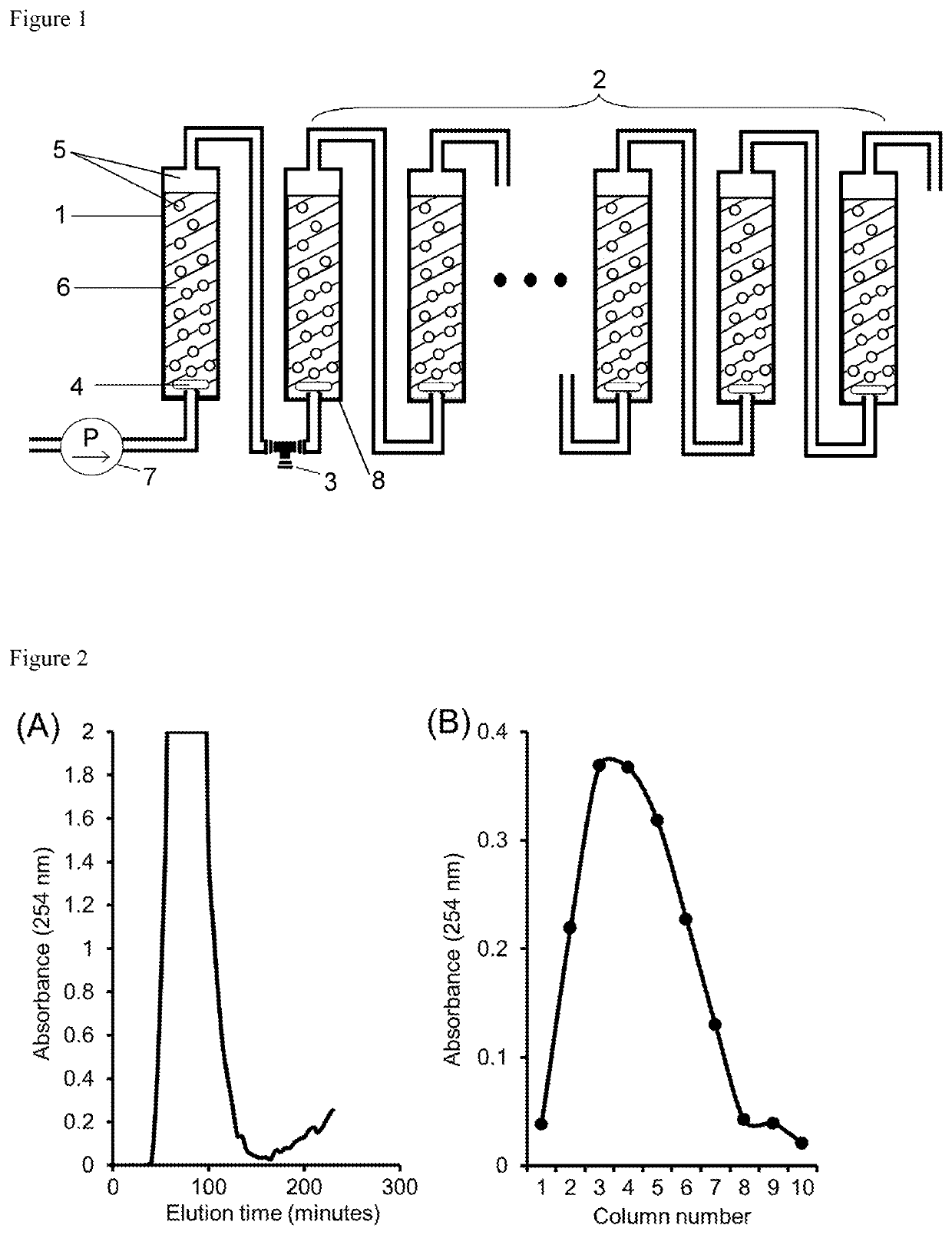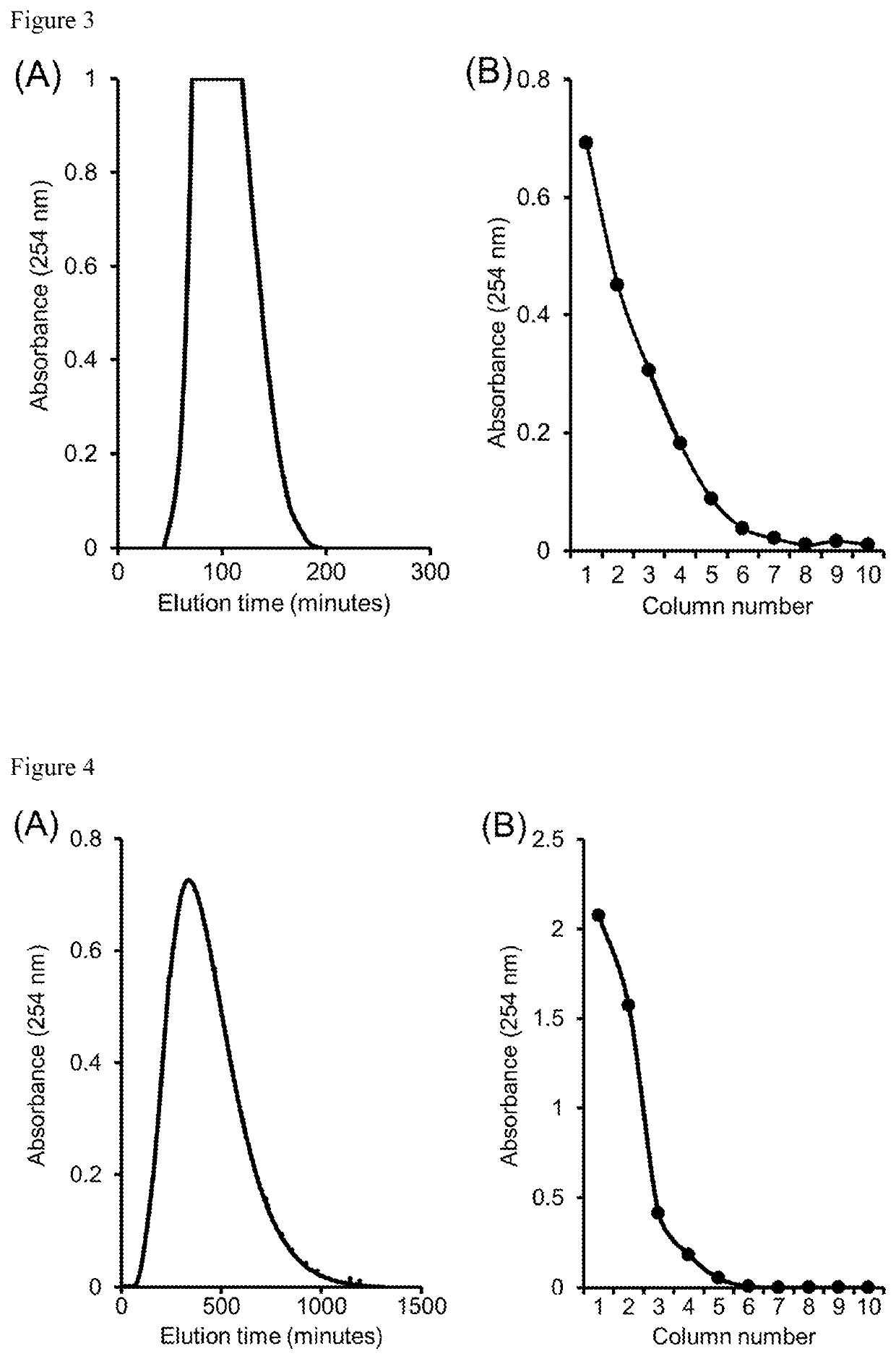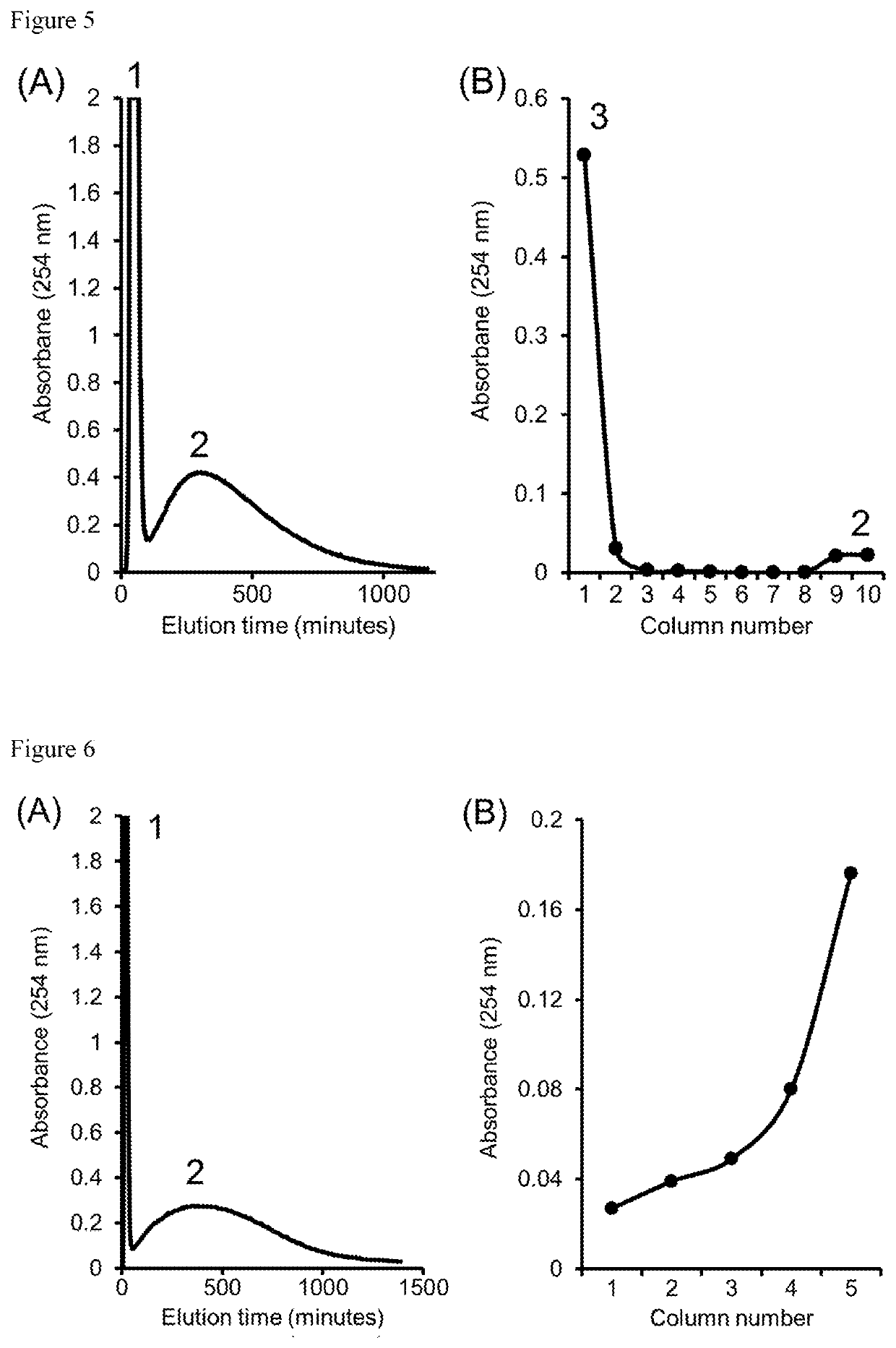Dispersed mobile-phase countercurrent chromatography
a mobile phase and countercurrent technology, applied in the direction of counter-current extraction, separation processes, instruments, etc., can solve the problems of mechanical cumbersome implementation, limited analytical applications of dccc separation, and limited methods, so as to speed up equilibration and facilitate large industrial scale separation of solutes
- Summary
- Abstract
- Description
- Claims
- Application Information
AI Technical Summary
Benefits of technology
Problems solved by technology
Method used
Image
Examples
example 1
[0034]Separation of cresol and benzyl alcohol by DMCC based on partition between n-butanol (mobile phase) and 1% NaOH (stationary phase). As shown in panel (A) of FIG. 2, the benzyl alcohol peak was eluted from the column system at about 120 minutes, followed by elution of cresol. Since cresol was moving slowly through the columns, the run was terminated after about 240 minutes. Upon termination of the run, the stationary phases in the different columns were drained and analyzed. Cresol peak was located over columns 1-8 (panel (B) of FIG. 2). This example illustrates the convenience and economy of recovering a slowly moving solute through column drainage prior to its elution from the columns, thereby reducing the consumption of time and mobile-phase solvent.
example 2
[0035]Separation of cresol and benzyl alcohol by DMCC was conducted based on partition between 1% NaOH (mobile phase) and chloroform (stationary phase). In Example 1, the organic phase served as mobile phase, and the aqueous phase served as stationary phase. This was reversed in Example 2 (FIG. 3), illustrating the practicality of both of these modes of DMCC operation. The cresol was eluted from the columns between 45-160 minutes (panel (A) of FIG. 3), whereas benzyl alcohol was recovered from column drainage over columns 1-8 (panel B of FIG. 3).
example 3
[0036]Separation of phenol and nitrobenzene by DMCC was conducted. In this example, phenol was eluted from the columns in the mobile phase (panel A of FIG. 4), whereas nitrobenzene was recovered from column drainage after termination of the run (panel B of FIG. 4).
PUM
| Property | Measurement | Unit |
|---|---|---|
| diameter | aaaaa | aaaaa |
| density | aaaaa | aaaaa |
| distribution coefficient | aaaaa | aaaaa |
Abstract
Description
Claims
Application Information
 Login to View More
Login to View More - R&D
- Intellectual Property
- Life Sciences
- Materials
- Tech Scout
- Unparalleled Data Quality
- Higher Quality Content
- 60% Fewer Hallucinations
Browse by: Latest US Patents, China's latest patents, Technical Efficacy Thesaurus, Application Domain, Technology Topic, Popular Technical Reports.
© 2025 PatSnap. All rights reserved.Legal|Privacy policy|Modern Slavery Act Transparency Statement|Sitemap|About US| Contact US: help@patsnap.com



